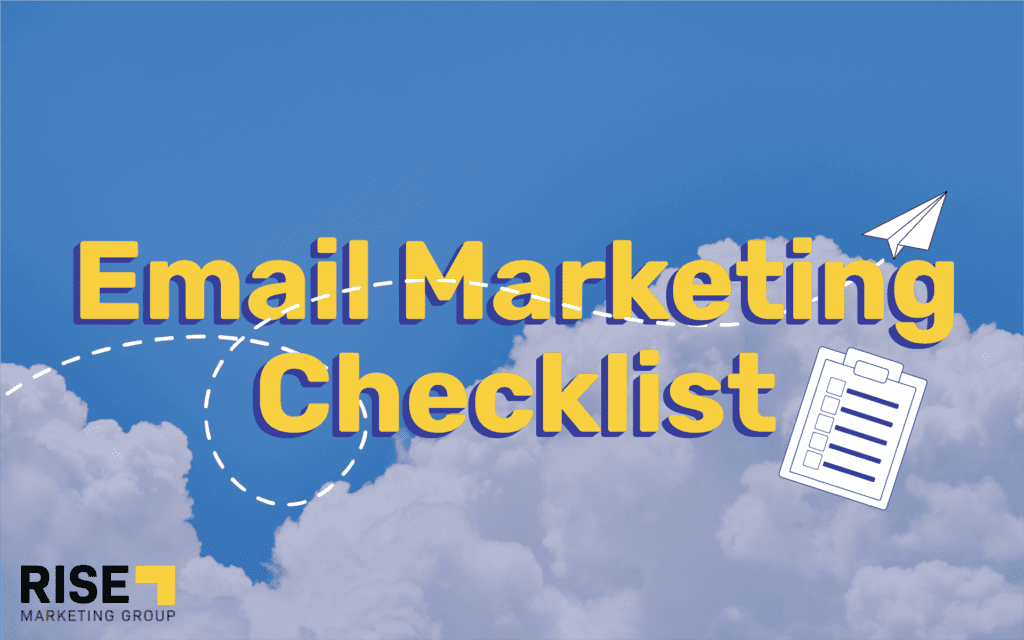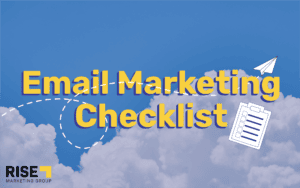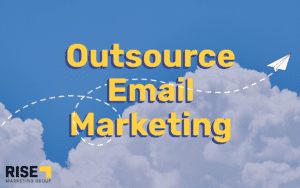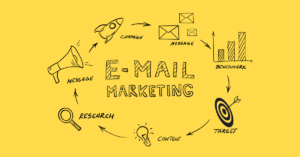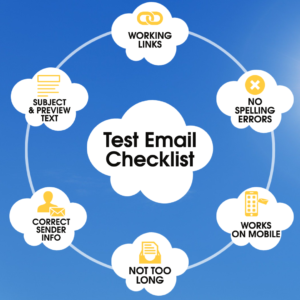What Is the Goal Email Marketing?
Email marketing is used to provide more information to your target audience who have already expressed interest in your products, services, or businesses by subscribing to your emails. You should have distinct calls to action in each email that you send to your audience that provide them with additional value they cannot access elsewhere. This additional value can enhance the content on product pages, blogs, or landing pages, encouraging your audience to engage further with your brand.
Do You Need Email Marketing for Every Business?
Every business, whether E-commerce or B2B, could benefit from setting up goals for their email marketing campaigns. These goals may be different depending on what your business has to offer and what your current goals are. These goals can also evolve over time.
When you engage with customers through email marketing, you are keeping your brand at the forefront of their mind. During times when you are beginning to offer new services, products, or discounts, notifications can reach your customers faster, especially since most might not be engaging with your website every day to see when there are updates.
If you do not have the bandwidth in house to do email marketing, outsourcing email marketing is another great option. When you outsource your email marketing, you get the expertise and experience of someone who focuses their career on email marketing full time, so they can zero in on your priorities while understanding which strategies work best.
Email Marketing Basics
Email marketing best practices are intended ways to improve your email marketing campaigns and strategy to increase open rate, click rate, and conversions. Ask yourself these questions when it comes to your current email marketing strategies:
- Are there CTAs on my website for email capture? (i.e. a pop-up, a discount for signing up for email marketing)
- Are my emails optimized for desktop and mobile? (No design or functionality issues)
- Do my images and email designs properly load?
- Are my emails being flagged for spam?
- Do I have a high unsubscribe/bounce rate?
- Is my click rate too low compared to industry benchmarks?
- Do my emails have enough quality content to offer to subscribers that provide additional value to my other marketing streams?
Your Complete Email Marketing Checklist
1. Audit Your Current Email Marketing
Before you strategize how to improve your email marketing, you will need to assess the email marketing that you already have in place. Ideally, an email marketing audit should be conducted from an outside perspective. An outsider will be able to see your email marketing with fresh eyes, allowing them to see which CTAs are clear, what could be improved (from someone still learning the brand like some of your audience might be), and notice little details in your email marketing strategies and set up that you may have looked over.
2. Functioning Integrations
You will want your email marketing to be integrated with your website so that any email leads coming through your site can be sent email marketing campaigns.
Integrations need to be checked to ensure that they are working properly and sending data in between platforms efficiently. For example, have you tested any pop-ups on your website to see if the emails captured there are being sent to your email marketing platform? If so, is there a time delay for how long it takes them to end up on the email marketing platform?
3. Set Up Automations
Email automations are an easy and hands-free way of connecting with your audience through emails more frequently with less effort. When you set up email automations, the emails will automatically send to your customers based on predetermined parameters. These conditions can send an automated email immediately after they subscribe on your website or send an automated email right after they purchase a product.
The more automations you have set up and organized, the less effort you will need on your end to keep up with audience engagement.
4. Use a Consistent Sender Email
A consistent sender email can help you avoid your emails falling into spam. Your sender email should be a trustworthy email name that represents your company/brand. It is always best to use an email that is connected to your site’s domain name. Simple emails, such as info@[domain].com are easily recognizable by your audience, making them more likely to engage with your emails because they know it came from the same domain as your website.
5. Track the Best Times to Send Emails
To increase open rate and engagement for emails, you will want to understand what the best times are to send out emails to your intended audience. Make sure that you are tracking the time of day, day of the week, weeks of the month, and months of the year. These factors can be constantly changing and can also be impacted by external factors out of your control. But, it will give you a sense of which times your audience is most likely to spend more time with your content.
6. A/B Test
A/B testing compares two variables within emails to see which variable performs best. It helps you understand how your audience engages with your emails and what they prefer. Using A/B testing allows you to continue progressing with your email marketing efforts.
There is a wide variety of A/B testing options to choose from. For example, you can test the time or date that it is sent out. Or, you can test two different subject lines. For A/B testing to work, your email marketing platform randomly splits your audience in half. The first half of your audience will receive Email A, while the second half receives Email B.
When using A/B testing, it is best to test the same options more than once. Consulting with an email marketer experienced in A/B testing can help you understand which strategies you should test and prioritize.
7. Track Analytics by Syncing with GA4
Are you tracking your email marketing data? Using GA4 to analyze your conversions, engagements, and site visits helps to keep all of your email analytics in one place. There, you will be able to compare your email marketing performance to other marketing channels, such as SEO or PPC.
8. Images that Improve Engagement
The designs and images within your emails need to have a purpose. They also need to reflect both your brand and intent. Images that are not attached to links may not serve a purpose in your email. We live in a society whose marketing is visually driven. From social media to billboards to TV, we are constantly engaging with screens and signs. Chances are your audience is more likely to click on an image than on text beneath it containing the same call to action.
Download Our Email Marketing Checklist PDF
If you want to benefit from higher open rates, click rates, conversions, and overall engagement, download our full email marketing checklist PDF to get started! Email marketing can take a lot of effort and time to get set up. If you need help with your email marketing, contact the experts at Rise today.

